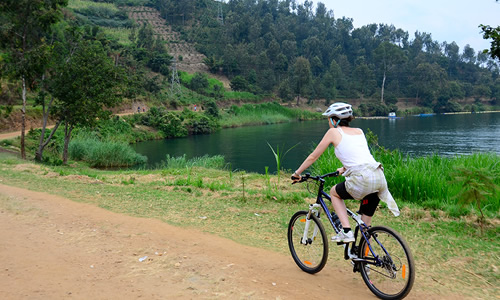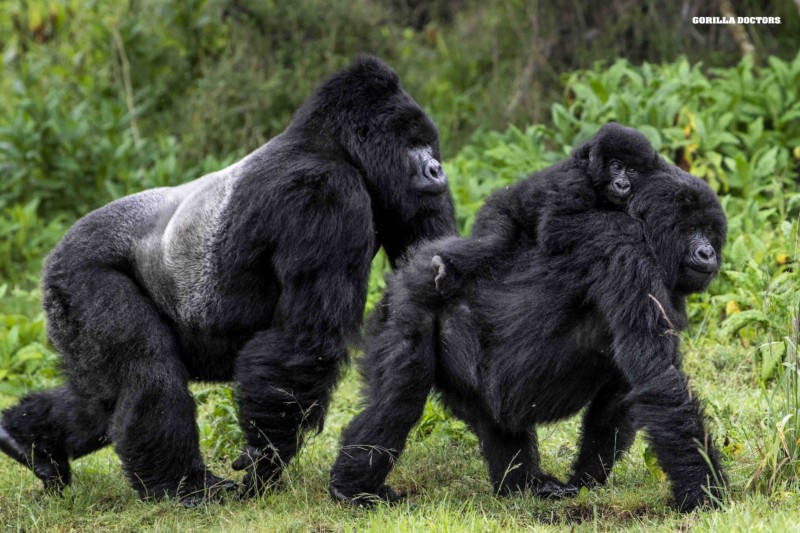Kenya Coastal Towns
Kenya Coastal Towns : A lot of people from all over the world visit the coastal towns of Kenya every year because of the beautiful beaches that along the coast. The southern portion of the Northeastern Province and a few coastal provinces make up this coastal region.
Portuguese, Arabs from Oman, and British visitors to Kenya all made stops in coastal towns in the early days of the country’s history. The Indians docked there since the railway line required them as workers.
Several beaches, including Tiwi Beach, Diani Beach, Galu Beach, Gazi Beach, Msambweni Beach, and Mwazaro Beach, may be found near the cities that dot Kenya’s coast. In the north, you’ll find a wide range of attractions, including the beaches of Nyali, Bamburi, Shandzu, Mtwapa, and Kikambala. Kilifi, Watamu, and Malindi, which are located in the extreme north, are just as stunning as the southernmost regions of the country. These beaches are a major reason why coastal communities have flourished.
The Kenyan city of Mombasa
Mombasa, after Nairobi, is Kenya’s second-largest metropolis. Before Kenya’s independence in 1963, Mombasa served as the country’s capital. However, after the completion of the railway connecting Mombasa and Uganda that year (1905), Nairobi became officially acknowledged as the capital city of the Republic of Kenya. Mombasa, the largest city in Kenya, is known as the “white and blue city” because of its predominantly white and blue buildings. Even though the municipality of Mombasa is the second largest in the country with a total of 3,528,940 residents, the city itself is home to 1,208,333 people as of the 2019 census.
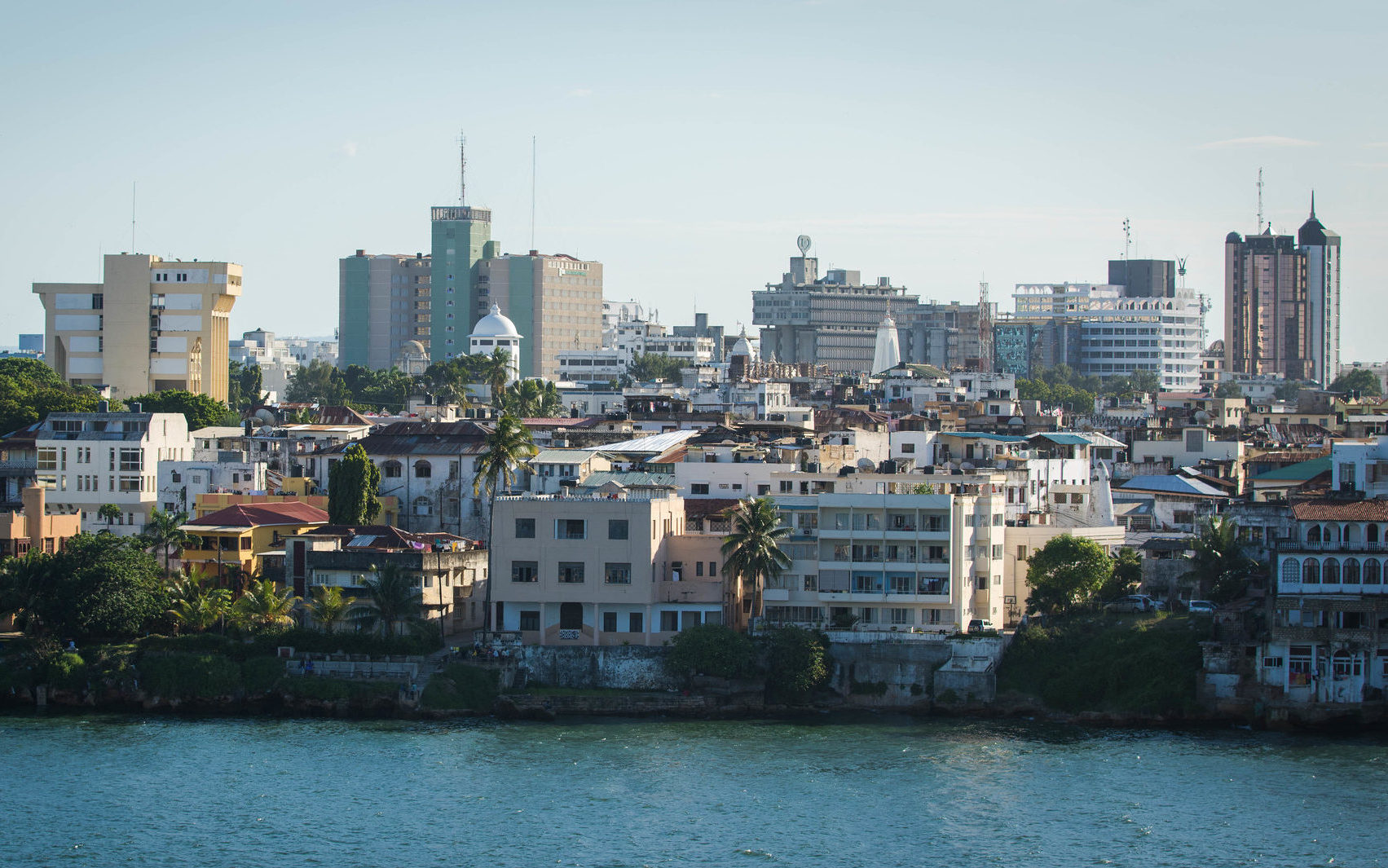
Mombasa is also a popular vacation destination, drawing visitors from all over the world each year. One of the official residences of the Kenyan government is located there.
The government of Mombasa issued a decree mandating the city be painted white with blue accents and the ancient town to be painted yellow. Due to its proximity to the Indian Ocean, Mombasa developed become a major port city for Mombasa County and the erstwhile Coast Province.
Contextual Background and ealry Dominance of Mombasa
It is widely held that Mwana Mkisi and Shehe Mvita were the original founders of Mombasa, with some even going so far as to claim that Mwana Mkisi was the progenitor of Mombasa’s oldest lineages among the Twelve Nations (ThenasharanTaifa). It is reported that Mwana Mkisi, a pre-Islamic era queen, established Kongowea, the first city on Mombasa Island. Shehe Mvita overthrew the Mwana Mkisi dynasty and built Mombasa Island’s oldest surviving stone mosque, which dates back to around the year 1300. It was stated that Shehe Mvita, a Muslim scholar, had closer ties to the modern values of Swahili culture that people associate with Mombasa.
While it has been speculated that Mombasa became a city about the year 900 A.D., no one knows for sure. There were other mosques being constructed at the time, including the Mandhry Mosque, which was completed in 1570 and is notable for its uniquely curved arch, which suggests that its architect was inspired by traditional African styles. Gold and ivory were only two of many commodities that flowed through Mombasa as the city served as a hub for international trade. The extent to which commercial ties had spread was demonstrated by the fact that Mombasa was linked to the Cholas of southern India. Ivory, millet, sesame, and coconuts were all traded to India from Mombasa.
Historically, Mombasa served as a major trading hub for pre-colonial Kenya, connecting the country to other African ports as well as the Persian Empire, India, China, and the Arabian Peninsula. Duarte Barbosa, a Portuguese explorer, once remarked that Mombasa is a hub of activity, with ships arriving from as far as Sofala, Cambay, Melinde, and even Zanzibar itself. Everything happened in the 1600s.
Mombasa Under British Administration
Mombasa fell to the British East Africa Association and then the Imperial British East Africa Company in 1887. Mombasa was formally annexed by the British in 1885. The British East Africa Protectorate centered around Mombasa. At the same time, the Uganda railway project adopted same coastal route. Indian workers who docked to build the railway project enhanced and revitalized Mombasa’s status after it was finished. Mombasa served as the protectorate of Kenya’s capital between 1887 until 1906; however, due to its strategic location, the seat of government was relocated to Nairobi, and the city has remained the republic’s capital ever since.
Mombasa, a city founded by the Portuguese.
In 1498, Vasco da Gama arrived in Mombasa as the first recorded European to do so. They slept so strangely for so long that the Portuguese were finally forced out of Mombasa after two years. In 1502, the sultanate changed its name from Kilwa Kisiwani to Mvita after declaring neutrality. Again in 1528, the Portuguese sailed across the ocean to invade Mombasa. In 1585, Emir ‘Ali Bey of the Ottoman Empire and Sultan Ahmed I of the Arjuran Empire of Somalia forged an alliance to free Mombasa and other ports in Southeast Africa from Portuguese dominion. In the year 1587, many Muslims living in Mombasa were slaughtered, and the Zimba, who ruled the Tete and Sena on the Zanbezi, occupied kilwa and slaughtered many citizens there as well. It was the tough Segeju Bantu-speakers of Malindi that ultimately subdued and humiliated the zimba. This was the third time the Portuguese had the opportunity to seize Mombasa, and this time they took advantage of it by establishing Fort Jesus as their administrative center. Between Lake Malawi and the Zambezi River, the Portuguese, who had joined forces with Kalonga Mzura, eventually defeated Chief Lundi and his army. Here a magnificent Don Jeronimo murdered the portuguese camp in Mombasa and was successful; he became a pirate, but the portuguese were sturbon, and they subsequently returned to set up direct dominion over Mombasa.
Mombasa under Oman’s hegemony.
The Oman rulers on Ugunja influenced local challenges, gaining control of the island’s key hub by occupying Fort Jesus. They also appeared well-organized, appointing not one but three governors: Imam Saif ibn Sultan, Nasr ibn Abdallah al-mazru’i, and Shaykh Rumba. But the Portuguese did have a force that kept trying to retake Mombasa, and in the end they did so under the leadership of Major Alvaro Caetano de Melo Castro. The Oman force quietly appointed four governors, reconquered Mombasa, and established a new line of sultans: Masud ibn Nasr al-Mazrui, ‘Ali ibn Uthman al-Mazrui, Abdallah ibn Muhammad al-Mazru’i, Ahmad ibn Muhammad al-Mazru’i, and Sulayman ibn ‘
Malindi
Malindi is at the mouth of the Galana River, which empties into the ocean just to the northeast of Mombasa. The distance from Mombasa is 120 kilometers. There are 119,859 people living there as of the 2019 census. The largest urban area in all of Kilfi County, it may be found there. Italians flock to Malindi, a prominent tourist destination in Kenya. Watamu beach and the Gedi ruins are to the south of Malindi, while the mouth of the Sabaki River is to the north; this region features some of the finest examples of traditional Swahili architecture and design. There are a lot of Muslims living there. In addition to Malindi Airport, Malindi is home to the San Marco Equatorial Range (today known as Broglio Spac Centre).
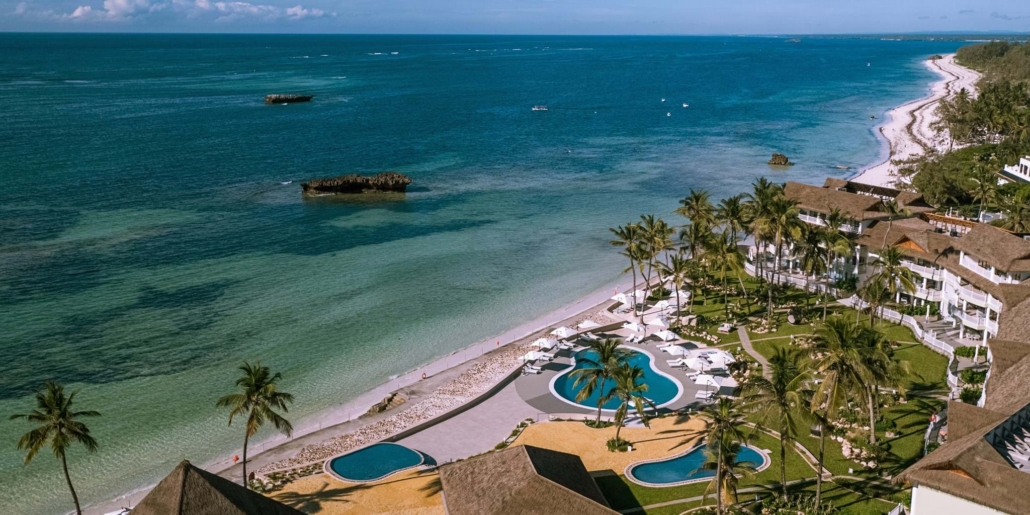
Malindi’s Past
The Bantu-speaking farmers who smelted iron, built timber, walled dwellings thatched with thick palm leaves, spoke a kiswahili dialect, and occasionally engaged in long-distance trade and regional trade first swarmed Malindi. As long as there was a need for intermediaries in trading between Somali, Egyptian, Nubian, Arab, Persian, and Indian traders, Malindi would continue to attract a large population. Where there was intermarriage, people talked both Swahili and Arabic while building homes. Malindi has been an important harbor for centuries, second only to Mombasa in East African shipping. A giraffe was transported back to China on behalf of the Chinese tourists that visited Malindi.
Unlike at Mombasa, where he was not welcomed, Portuguese explorer Vasco da Gama was greeted by the sheikh of Malindi, where he subsequently erected a coarl pillar that is now a popular tourist attraction. The bulk of Malindi’s expanding population spoke Swahili, leading to internal political strife for authority. There were the noble families, represented by their elected “wenye mui”(chief), and the rich clan leaders who elected him.
The main source of income for the people of Malindi was the export of ivory and rhino horns. Oranges, millet, and rice were among the agricultural goods they shipped abroad. In spite of its greatness, Malindi lags behind Mombasa and Kilwa after the arrival of the Portuguese. For their journey to India, the Portuguese established a port at Malindi. By supporting the Portuguese in their conquest of Kilwa and Mombasa, Malindi was able to flourish. Malindi fell from prominence at one point, but Francis Xavier and Ludgwig Krapf restored it to its former glory by funding the construction of numerous landmarks, including a juma mosque, a portuguese chapel, and a cemetery. Slave trade was conducted through Malindi, which also served as a port for the Zanzibari sultan, Majid. Many Malindi-based businesses flourished when the British abolished the slave trade and made agriculture the priority. The first hotel was erected by commander Lawford, and since then the hospitality business has flourished. The large number of Italians who settled in Malindi during World War II continues to this day.
City of Lamu
Lamu, like many of Kenya’s other coastal towns, has a long history.
Unlike other coastal towns, there are hardly any cars here and nearly no traffic thanks to its northwestern location. It has various Swahili communities and is well-known for maintaining its Islamic heritage. There are many mosques and women generally dress in traditional garb. Shela Beach, Lamu’s sand beach, is located near the Old town, while Shela Village, Lamu’s hotel and restaurant district, is located to the east of the beach. The locals who work in the tourism industry typically have a command of English, Swahili, and Arabic, and they frequently exchange Muslim and Christian welcomes.
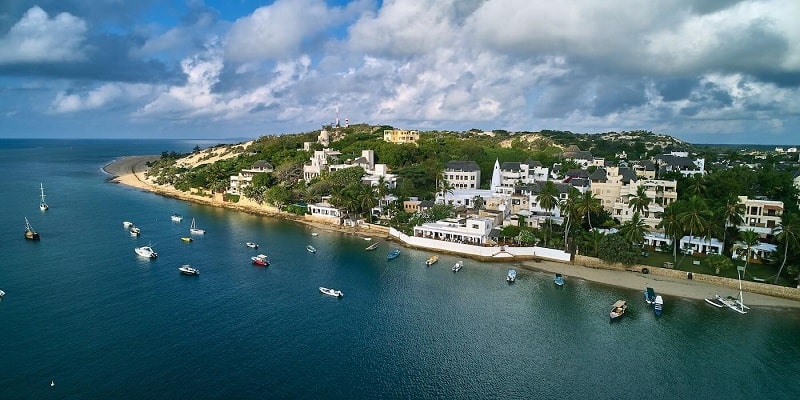
Settlement of Mtwapa
This arid community 15 kilometers north of Mombasa is one of the coast province’s fastest-growing communities. Mtwapa has more things to do for tourists, but antiquated public transportation. Many Europeans have made Mtwapa their home, bringing with them progress and modernization. It’s the epicenter of nightlife, hence the moniker “village tha never sleeps,” since the bars keep the music going well into midnight, and there are vendors and people selling food and items and prostitutes. Real estate prices and development activity have skyrocketed as a result of the influx of Europeans looking to retire or spend the winter in Kenya. Mtwapa is not a resort but rather a bustling Kenyan city with all the attendant noise, dust, and chaos that comes with it.
Msambweni Town
Located in Kwale County, between Mombasa and Tanzania, is where you’ll find this little settlement. The journey from Diani beach takes around half an hour, there is virtually no package tourism as of yet, the area is peaceful, and you won’t see many people on the beach for miles.
Approximately 12,000 people call the ten villages that make up Msambweni home. The majority of these residents are Muslims and members of the ruling Digo tribe. Coconut palms, mango trees, neem trees, and sugar cane plantations are all a part of the local economy, along with fishing, crafts, and commerce. The Kisimachande sublocation in Msambweni is home to the County Hospital, while the Tumbe sublocation is home to the Medical Training Center.
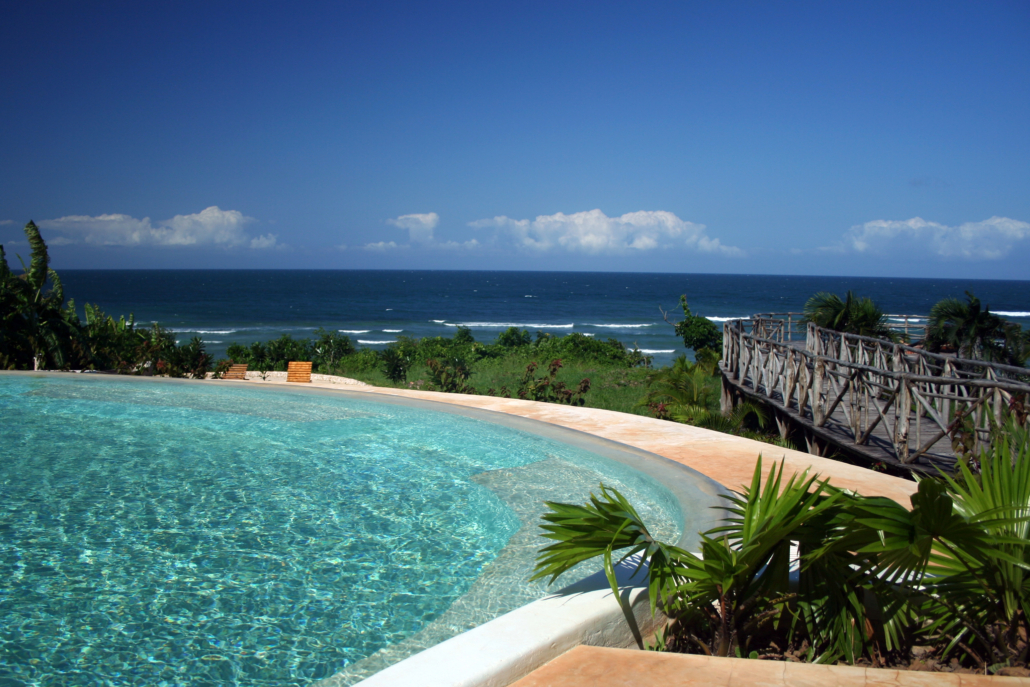
Ukunda, Diani Beach
Just 30 kilometers south of Mombasa, on the coast of the Indian Ocean in Kenya, is the popular tourist destination of Diani Beach. Dubbed the “South coast,” this region serves as the focal point for coastal town visitors. Tiwi Beach, located near the Kongo River, is to the north; Diani Beach is 10 kilometers south; Galu Beach is 20 kilometers south; Gazi Beach is 30 kilometers south; Mswambweni Beach is 50 kilometers south; and Mwazaro is to the south.
Travelers from everywhere flock there to enjoy their vacations. Although the North Coast near Mombasa has more attractions due to its beautiful beaches and ancient landscape, the South Coast is still a great place to visit. Some South Coast hotels are more removed from the action, promising tranquil beach and pool vacations that may grow stale. Some are located more conveniently to restaurants and shops, while others are further from these venues. Diani blends northern and southern traditions to make photogenic memories.
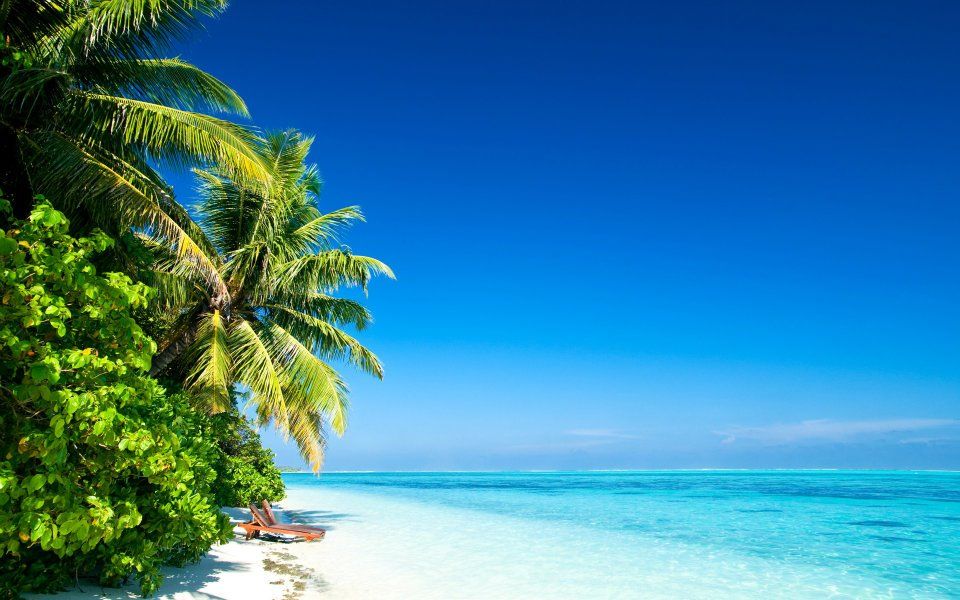
Kenya’s coastal cities, including Mombasa, and how to get there
There are a number of ways to enter and leave this coastal city. All roads head in the direction of Mombasa. The following methods will lead you to the seaside cities:
Transportation via Air
There is an international airport in Mombasa. The origin of the chaani area can be traced back to Port Reitz. It is a major hub for international and domestic flights in Kenya.
Transportation by Roadway
All of the roads around the coast have been paved, and there are motorways that link the coastal cities to Nairobi. In Mombasa alone, you’ll find Jomo Kenyatta Avenue, Diogo Road, Nkrumah Road, and many more. In the south, you may take a flight from Mombasa to either Nairobi or Dar es Salaam, while in the north, you can take a road that links to Malindi and Lamu and continues on to the Somali border. The various points of interest in and around the coastal cities are easily accessible via these highways.
Mini buses, known as matatus, and tuk-tuks, motorcycles with two wheels at the back and one in front, are the most frequent forms of transportation among locals. These vehicles typically seat three to two people.
Our train
The British-built station between Nairobi and Mombasa was replaced in 2017 by a standard-gauge railway with stops at Miritini Turminus station and many more along the route. Station in Mombasa is around 20 kilometers from the downtown area. From Nairobi, the trip takes about five hours.
Getting Things Moved By Water
With 19 deep water docks, Mombasa is East Africa’s largest port. While foreign cruise ships swarm the port, the rail connection to the interior is limited. Ferries provide service to the Mombasa harbor.
Ferry
The Kenyan ferry service runs from Kilindini and Mtongwe to Lioni on Mombasa’s south coast, where it picks up passengers from Mombasa Island. Some people fly to Ukunda airfield instead of taking the ferry to the south coast. In addition, a bypass is being constructed to join Mombasa with the southern shore.
Lodges in Kenya’s Seaside Communities
There are numerous options for lodging, from high-end resorts to more modest hotels, all within walking distance of the area’s beaches and major shopping areas. Kenya Bay beach Hotel, The reef Hotel, Mombasa, Voyager beach resort, Hotel sonrisa, and many more are just a few of the places to stay in these seaside cities. The majority of the hotels provide all-inclusive plans, which include breakfast, lunch, and dinner.
Economy
Beaches, historical landmarks like Fort Jesus, Tsavo National Park, historic villages, cultural attractions, and a wide variety of other attractions are vital to the economies of coastal communities. Mombasa is one of the most popular beach destinations in Kenya. Although the Old Town and Fort Jesus on Mombasa Island are popular tourist destinations, the island itself is not. North of the city are the beaches of Nyali, Bamburi, and Shanzu. South of Mombasa, you’ll find the popular beach destinations of Shelly, Tiwi, and Diani. There are several high-end resorts on these beaches, with cheaper options further afield. To encourage local growth, Mombasa would be designated as a Special Economic Zone where some industries, including the production of tea, clothing, and footwear, will be free from paying some taxes. It’s a fix for the problems with E.P.Z.s.

